Five questions for the second week of the Giro d'Italia
Potential ambushes for the GC men and fireworks from Van der Poel
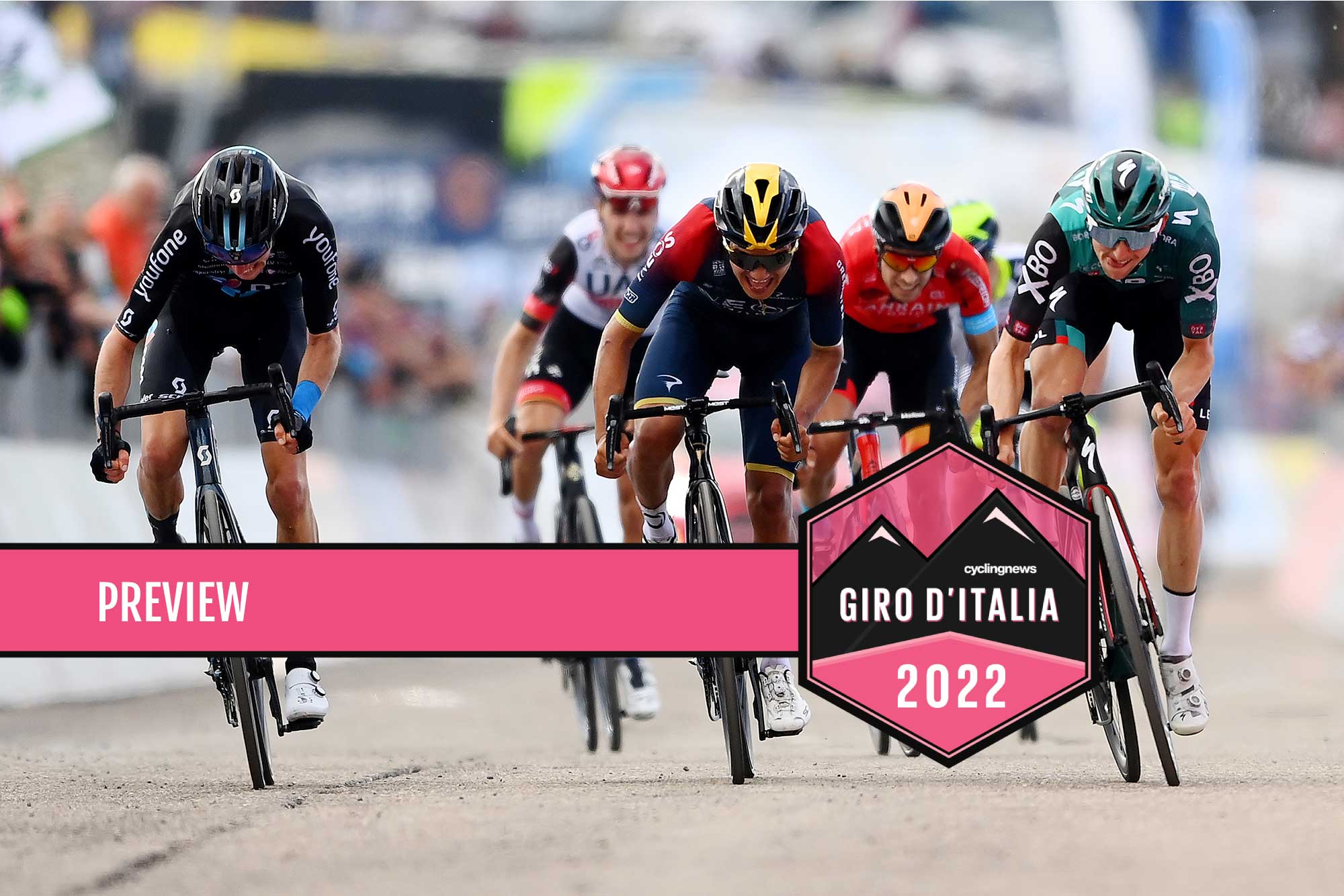
The panorama atop the Blockhaus allows clear views of the Adriatic coast, and when the Giro d'Italia gruppo reached the summit at the end of stage 9, they will have noticed something else about the vista: the road won't climb above 1,000 metres for another week.
The high mountains don't reappear on the horizon of the Giro until next Sunday when the race enters the Alps with an arduous afternoon in the Val d'Aosta. Stage 15 features the category 1 ascents of Pila-Les Fleurs and Verrogne ahead of the long yet steady ascent to the finish in Cogne. But before the Giro d'Italia reaches that next set-piece occasion, the peloton tackles a second week dotted with stages that are open to a variety of interpretations.
The highest point in the second week comes when the Giro revisits the 957m-high Passo del Bocco for the first time since Wouter Weylandt's tragic death in 2011. That ascent comes on a hilly outing to Genoa on stage 12, where the terrain is amenable to a break but not prohibitive to fast men with the ability to climb.
It's that kind of a week on the Giro, né pesce né carne – neither fish nor fowl. It's that kind of a Giro, too, where the hierarchy among the contenders remains difficult to decipher. Ahead of the Giro's resumption on Tuesday, we look at some of the questions that will define the second week of the race.
Can López hold onto the pink jersey for a second week?
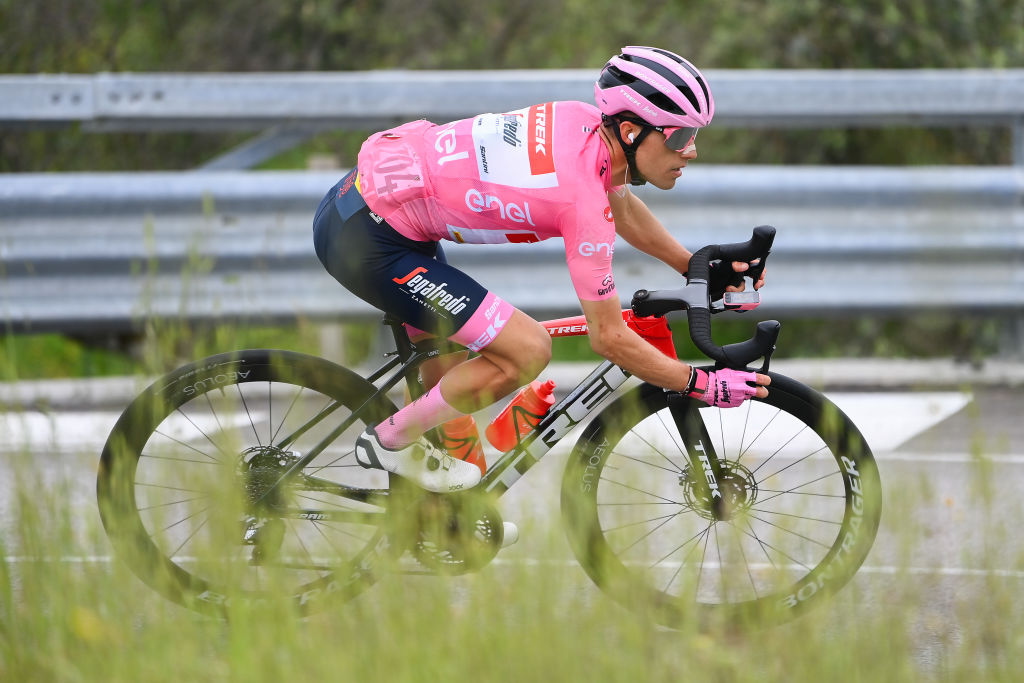
There's a strong case for saying he could do so for most of it. Just 12 seconds currently separate López from his closest pursuer João Almeida (UAE Team Emirates). After his stunning climbing performance on the Blockhaus and the major GC sort out that unfolded on that monster ascent, López's current narrow lead is more solid than it looks.
The Giro d'Italia favourites are highly unlikely to make a major move until at least Saturday's stage 14 to Torino where riders tackle the Superga and Colle della Maddalena twice in the last 70km. Having a solid leader like López who is not perceived as a long-term threat, but who is willing to defend the maglia rosa through the four transition stages until then will ease the pressure on the GC contenders' teammates until the critical third week.
So can López be certain doubling his current tally of six days in the maglia rosa? On paper, the main threat will come from riders like Alejandro Valverde (Movistar), Domenico Pozzovivo (Intermarché-Wanty Gobert) or perhaps even Guillaume Martin (Cofidis). These riders are amongst the few currently lurking at the minute to 90-second margin, and who arguably have more to gain should they try to make into a breakaway one day this week.
Get The Leadout Newsletter
The latest race content, interviews, features, reviews and expert buying guides, direct to your inbox!
The other concern for López is that his Trek-Segafredo team could burn themselves out having had to work for such a long period on the front, leaving them vulnerable to an attack that could move a non-GC threat into the race lead. A similar scenario happened in the 2010 Giro d'Italia when another unheralded fellow Spaniard David Arroyo held the lead thanks to the combined effect of two second-week breakaways, to L'Aquila and then Asolo a few days later.
However, López has proved himself a solid leader and his teammate Giulio Ciccone's GC aspirations have all but evaporated so his team will be focused more strongly on him. The current status quo favours the overall contenders, so there may be some tactical collaboration on their part as well. How far López could go beyond that remains anyone's guess. (AF)
Where will Mathieu van der Poel put on his next show?
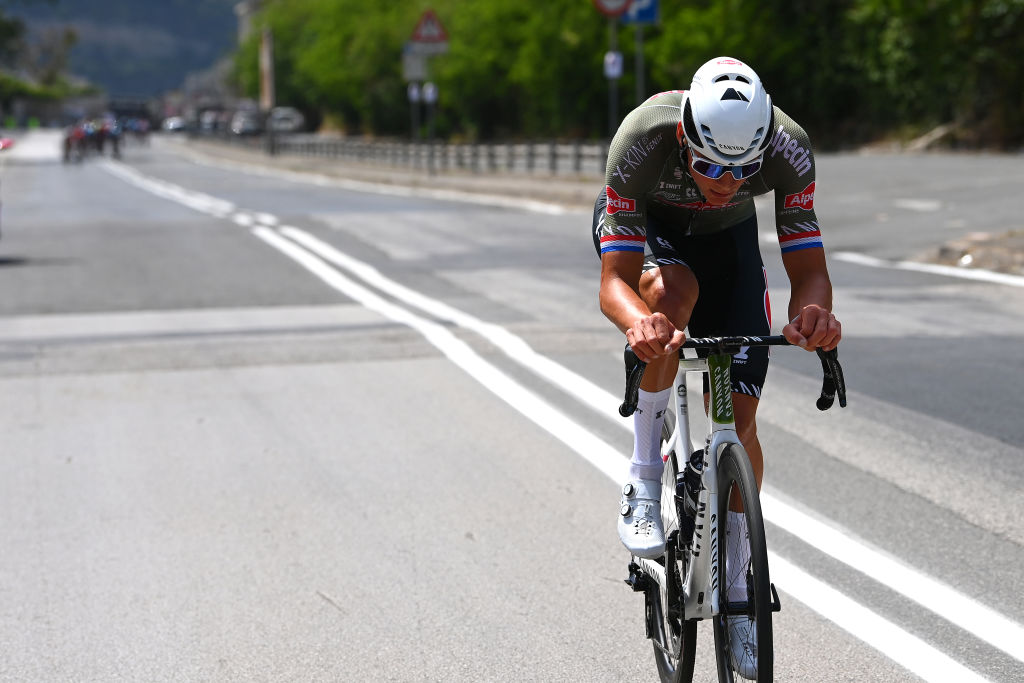
Thanks to his victory in the opening uphill finish in Visegrád and 72 hours in the maglia rosa, Mathieu van der Poel (Alpecin-Fenix) has already more than fulfilled his pre-race mission in the Giro d'Italia. But as was blatantly obvious that the Dutch rider meant what he said about trying for some more stage wins when he went on the attack first solo and then again in the 20-man breakaway of the day on Saturday's stage in Naples.
Of what's left of the Giro the most obvious opportunities for Van der Poel are almost all in the second week, and they start straight away with Tuesday's stage 10. The stage heads up Italy's eastern seaboard before diving inland and features a couple of muri climbs in the second half, most notably the 4.2km Monsano inside 10km to go. There's more than a whiff of Tirreno-Adriatico in the finale, including the town of Castelfidardo, where Van der Poel took one of his most memorable victories ahead of Tadej Pogačar last year, which is not far from the finish in Jesi.
However, if Tuesday's stage is definitely not one for the sprinters, it's nowhere near as hard as a Tirreno finish, meaning Van der Poel may have limited opportunities to shake off the opposition unless he gets in an early breakaway. A better chance for the Dutchman may arise on stage 12's semi-mountainous trek through the Apennines and down into the Mediterranean coastal city of Genova. On paper, a breakaway looks certain to go clear on the mid-race Passo del Bocco, and a pair of late third category climbs should be hard enough for Van der Poel to whittle down the move or go solo.
In his press conference on Monday, Van der Poel intimated that he would not contest the likely bunch sprints in Reggio Emilia and Cuneo, meaning that his final opportunity is likely to be stage 14. Van der Poel may well fall foul of a spell of guerrilla warfare between the GC favourites if he opts to go clear there, but if he can form a working alliance with one of the overall contenders, Saturday could see another spectacle from the Dutchman like the one he produced in Naples. (AF)
Which day looks most likely for a GC ambush?
Stage 14 in Turin wins this unofficial competition by a country mile for the entire Giro, let alone the second week. More than 3,000 metres of vertical climbing are packed into just 147 kilometres of racing, meaning all the riders will be on the rollers at the start getting as much of a warmup as they can before what promises to be an intense, if short battle.
Just a few kilometres separate the start town of Santena and the finish in Turin, a little further north as the crow flies. But after a fairly flat opening hour of racing, the peloton will have to tackle a relentlessly undulating 36-kilometre semi-urban circuit featuring two second-category climbs, the Colle della Maddalena and the Colle di Superga, on each lap.
While the Superga's steady grind is well known to the peloton from the 2021 hilly edition of Milano-Torino (won by Primoz Roglic) and first featured in the Giro d'Italia back in 1958 (won by climbing great Federico Martín Bahamontes), the much less heralded Maddalena has a horrendously difficult opening section with segments at 20% and could do more damage.
Apart from the climbs, what makes this stage such a good one for ambushes is the almost absurdly technical nature of the circuit: twisting, narrow urban roads, sinuous descents and unclassified climbs aplenty. The last of these mini-ascents in the Parco di Nobile city park is just four kilometres from the stage 14 finishing straight alongside the River Po.
Any GC team, no matter how strong, will struggle to keep all their rivals in sight and under control on such a testing circuit. And anybody wanting to avoid staking all their options on stage 15's set-piece Alpine stage will lose nothing by having a go here. Expect fireworks. (AF)
Can anyone who lost time re-enter the general classification race?
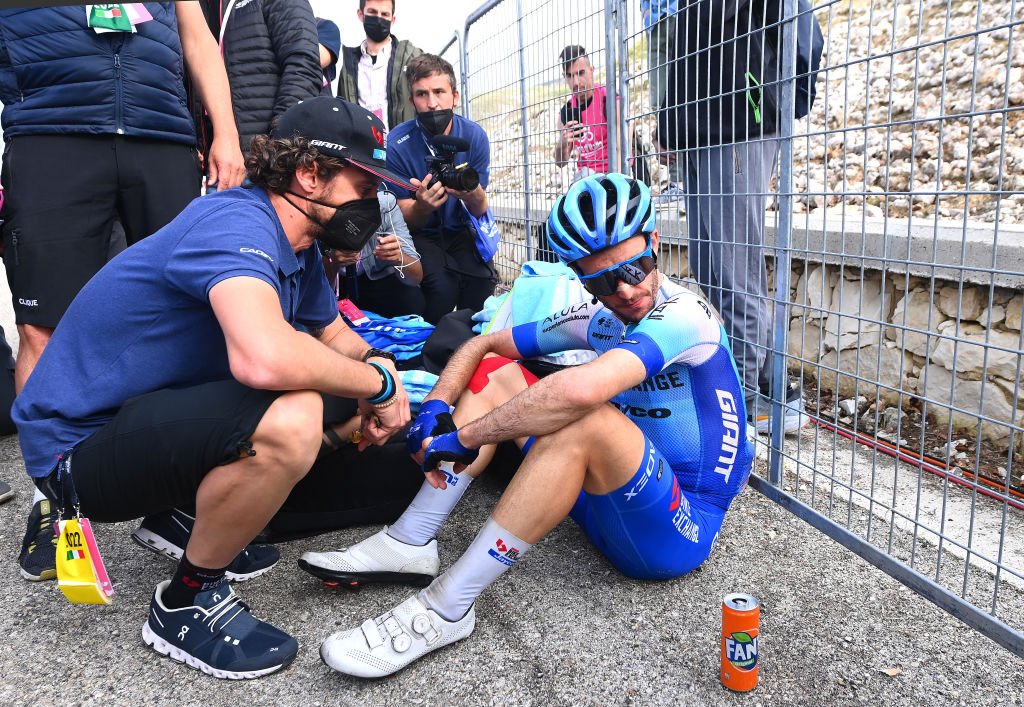
The upper reaches of the general classification are still very tightly packed after the summit finish on the Blockhaus, but the run through the Maiella massif on stage 9 appeared to put any notion of contesting the podium in Verona beyond the wildest imagination of all bar a dozen riders.
The top seven overall lie within half a minute of one another, and five more riders sit within 1:30 of maglia rosa Juan Pedro López (Trek-Segafredo), but everybody else is now over three minutes down and seemingly out of the picture altogether.
Men like Vincenzo Nibali (13th at 3:04 and, on the evidence of the Blockhaus, not yet ready to ship time and chase stages), Hugh Carthy (17th at 4:22) and Ivan Sosa (19th at 5:53) cannot overturn such deficits by simply moving the chains. Two weeks from the end of this Giro, they are already deep into Hail Mary territory.
It's unlikely, but Guillaume Martin (Cofidis) showed that it can be done with his enterprising (and, by his telling, accidental) afternoon in the early break in Naples on stage 8. The second week features at least two more stages with similar potential for confusion and chaos. A climber of Carthy's quality wouldn't be granted much leeway to go up the road early on a full-blown mountain stage, for instance, but stage 10 to Jesi and stage 11 to Turin will be difficult for anybody to control.
The prospects of a sizeable early break going the distance are high on those days, but it remains to be seen if a fallen GC man will be allowed to slip under the radar. Strange things can happen in the second week of the Giro, of course, as Richie Porte (16th at 4:19) discovered on his debut in 2010, when he took pink after a group of 40 riders gained 12 minutes on the road to L'Aquila.
A repeat of that infamous day seems implausible in the cycling of 2022, but vigilance will be required all the same. What the second week lacks in mountains, it will make up for in tension. (BR)
How will Ineos deploy their strength in the second week?
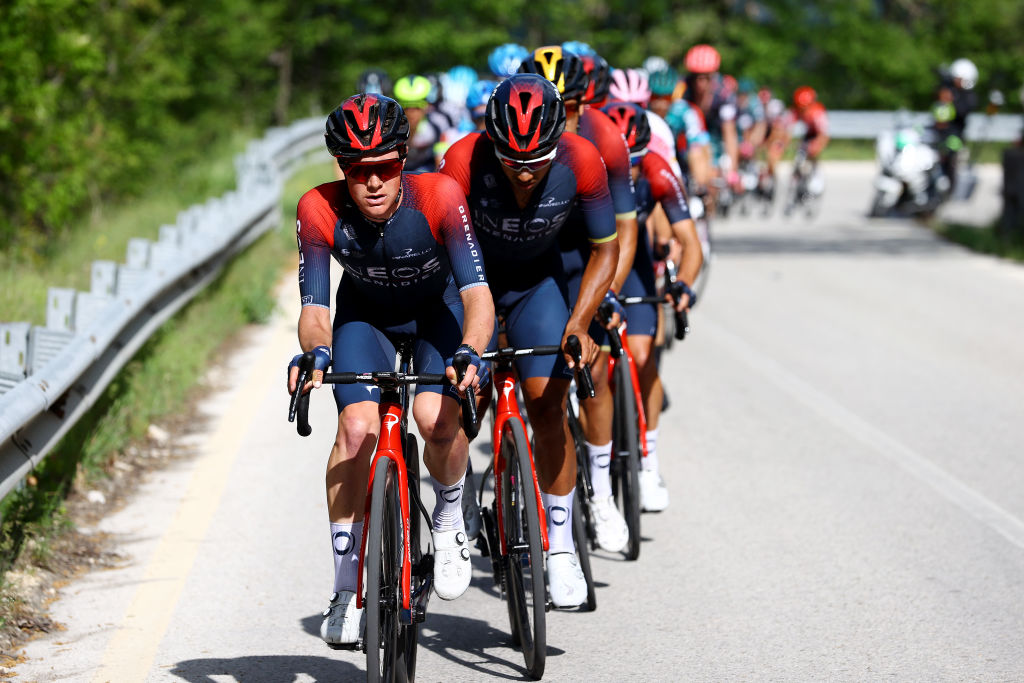
Ineos have been not been shy about occupying real estate at the head of the peloton through the opening phase of this Giro. On the flat stages, they rode to keep Richard Carapaz out of the trouble. On the hillier days, they rode to wear down their rivals. On the mountain stages, they rode to re-enact the Sky train of yore.
Unlike a year ago, however, their leader has not yet capped their work by making individual gains on his direct opponents. Carapaz splintered the front group with his stinging attack on the Blockhaus, but he had Romain Bardet and Mikel Landa for company as he danced clear. By the summit, Jai Hindley, João Almeida and Domenico Pozzovivo would also join him. Carapaz is strong, but not stronger than his rivals – at least not yet.
Carapaz remains the favourite to win the Giro and Ineos have on occasion raced as though he were the de facto race leader, but for now, he is effectively level on time with Bardet and Almeida, with Landa not far behind. It will be fascinating to see if the parity among the leading riders convinces Ineos to deploy their resources a little differently in the second week.
They can expect Trek-Segafredo to perform at least some of the policing duties through week two as they look to extend López's spell in the maglia rosa, but Ineos might also be minded to lean more on UAE Team Emirates, DSM and Bahrain Victorious to take on the weight of the race.
Then again, Ineos will retain faith that Carapaz – the only previous Grand Tour winner still in realistic contention – has the ability to outlast his rivals in the third week. They allowed the on-form Richie Porte to exit the GC picture through his work for Carapaz on the Blockhaus, after all, and they may see no reason to deviate from their set playbook just yet. (BR)
Alasdair Fotheringham has been reporting on cycling since 1991. He has covered every Tour de France since 1992 bar one, as well as numerous other bike races of all shapes and sizes, ranging from the Olympic Games in 2008 to the now sadly defunct Subida a Urkiola hill climb in Spain. As well as working for Cyclingnews, he has also written for The Independent, The Guardian, ProCycling, The Express and Reuters.
